Adding a perched beach to your waterfront home expands your options for relaxation and entertainment as well as increases your property value. Installing a perched beach isn’t an easy task, but by getting guidance and following the State’s rules, you could be relaxing on your own private beach.
What exactly is a perched beach?
A perched beach is a sandy area that is at least 1 foot above the high-water line. It usually looks like a terraced area, with a retaining wall and steps leading from the water’s edge to the sandy area. These steps must stay 1 foot behind the high-water line. Perched beaches often need a back for supporting grade.
Love the idea, but not sure where to begin?
First, you’ll need a plan. There are many rules and regulations you’ll have to follow, so it’s best to work with someone who has experience in designing and installing perched beaches right from the beginning.
Then, you will need a Wetlands Permit from the New Hampshire Department of Environmental Services (NH DES). This permit will take at least 75 days for the State to review. It’s important to leave enough time for the process as the beach cannot be constructed without a permit.
What are some other considerations for the planning stage?
- Your beach and other water access structures cannot be more than 20% of your shoreline frontage, so if you have 100 feet of contiguous shoreline, your beach can only be 20 feet wide, and this also depends on other existing features.
- Be aware that you can’t build a perched beach on a slope that’s greater than 25%, calculated from the high-water line to the back of your proposed construction. However, your beach itself must be flat, and have no slope to it at all, which will minimize any runoff into the lake.
- You’ll also want to locate your beach in an area that will impact the environment the least, where you will have to remove the least amount of vegetation, and where animals, birds, amphibians, etc. do not nest. Your beach cannot contact the water’s edge at all, and you can’t dredge the lake bottom and/or add sand to the lake for any reason.
- Your plans must include ways to divert surface runoff around the beach to allow for sand erosion during storms.
- Your perched beach must be 10 feet from property boundaries, unless you get permission from all effected abutters.
- During construction, you can’t have any machinery in the water, and you can’t move any boulders along the shoreline, except to build the steps to your beach.
- You can only use 10 cubic yards of sand on your beach, and it must be clean sand. You can only replenish this sand once every six years.
These are some of the basics to get you started with designing your own perched beach area; there’s a lot more to this process. For more information, you can contact the NH DES Wetlands Bureau by phone at (603) 271-2147, via email, or by mail at 29 Hazen Drive; P.O. Box 95, Concord, NH 03302-0095.
Let us help!
The team at Stephens Landscaping Professionals has experience in designing and installing perched beaches. Below are just a few pictures from some of the projects we’ve completed.
We’d love to help you create a beach that truly enhances your lakefront home. Reach out or give us a call at 603.707.0630.
If you’re interested in learning more about how a perched beach may improve your home’s value, contact our friends at Lake Life Realty, who will be happy to provide more information about what they have seen in their experiences around the lake.
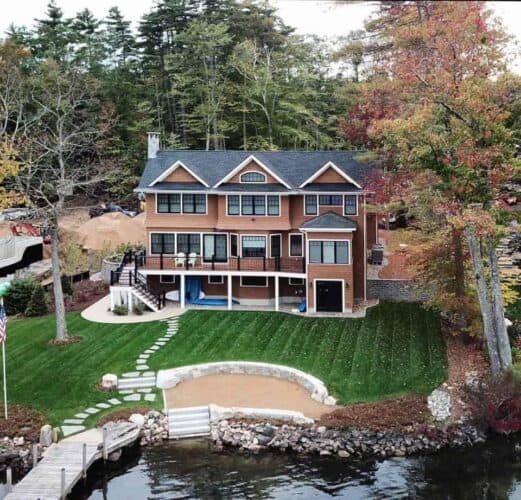
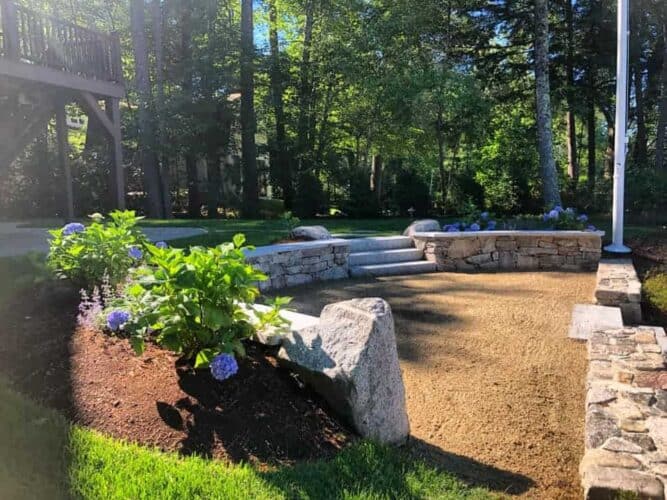
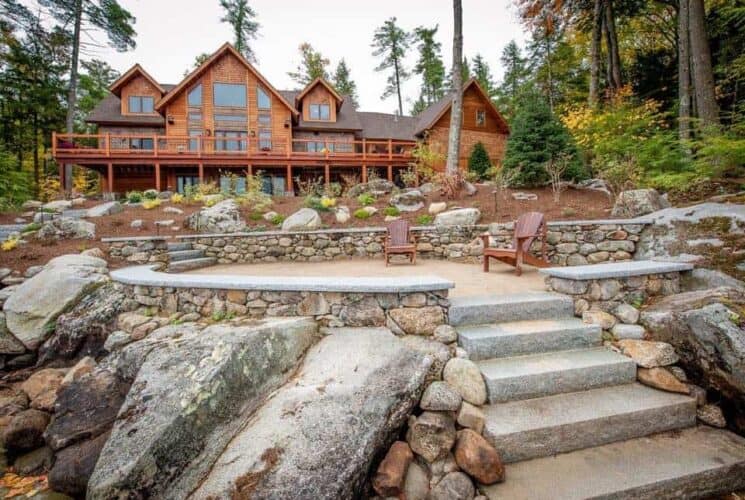
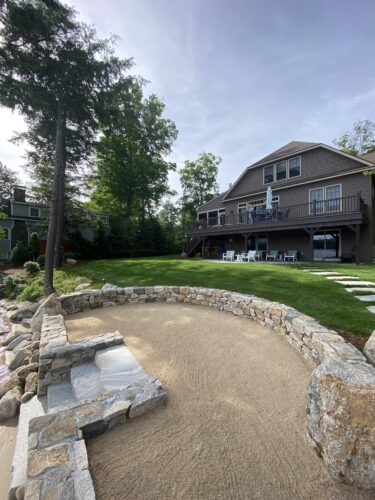


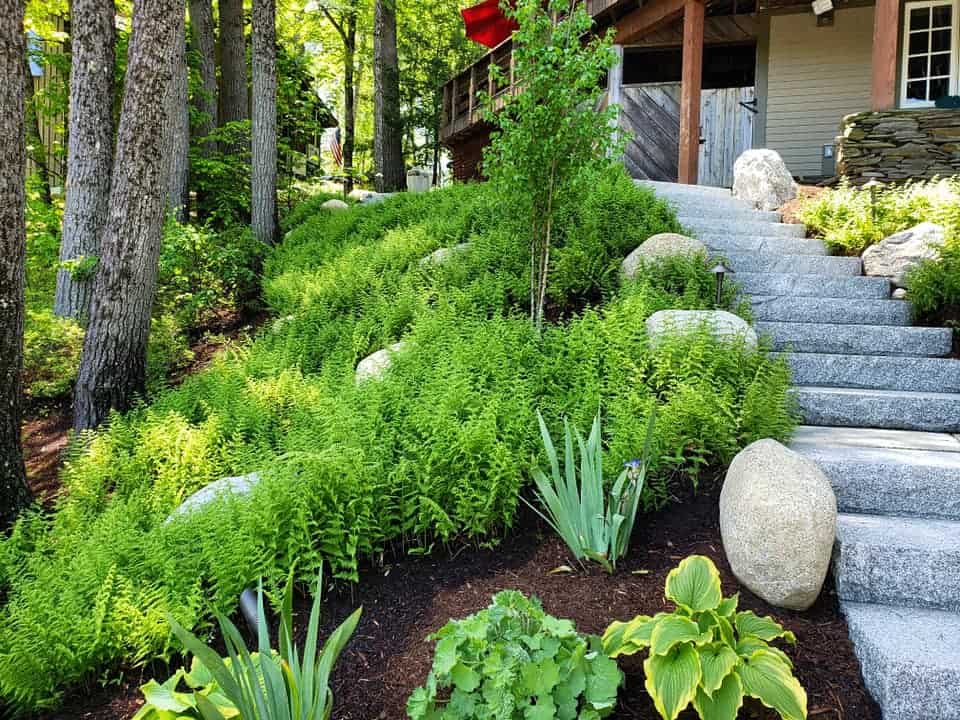
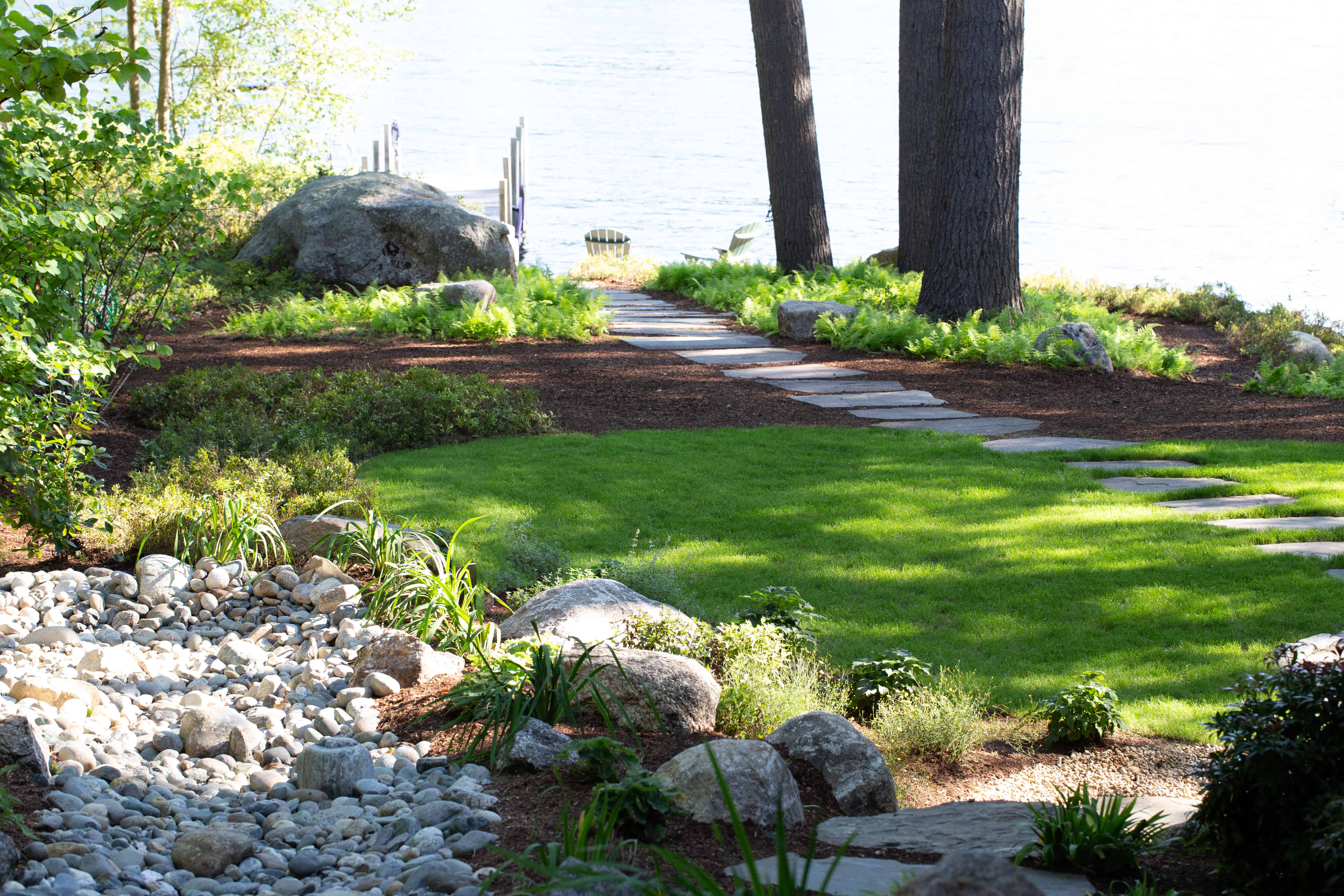 People are drawn to the beauty of New Hampshire for its mountains, wildlife, and its numerous pristine lakes and ponds. The Shoreland Water Quality Protection Act (SWQPA) was established to protect the natural resources and to oversee the management of shoreline properties. Protecting our natural resources and the quality of our public waters is the responsibility of all to ensure the health of the environment and the economy of NH.
People are drawn to the beauty of New Hampshire for its mountains, wildlife, and its numerous pristine lakes and ponds. The Shoreland Water Quality Protection Act (SWQPA) was established to protect the natural resources and to oversee the management of shoreline properties. Protecting our natural resources and the quality of our public waters is the responsibility of all to ensure the health of the environment and the economy of NH.